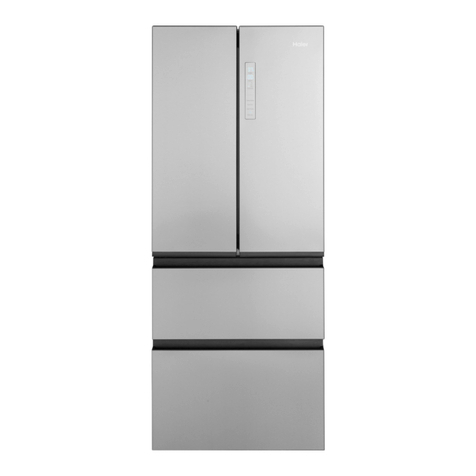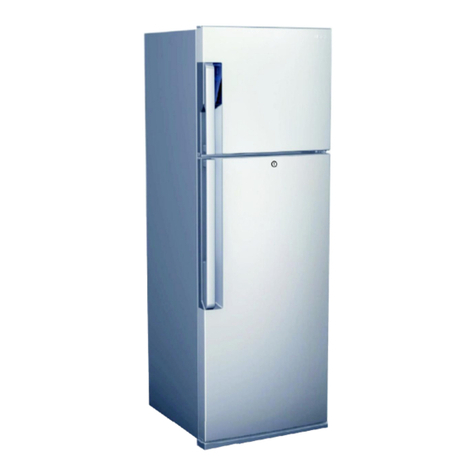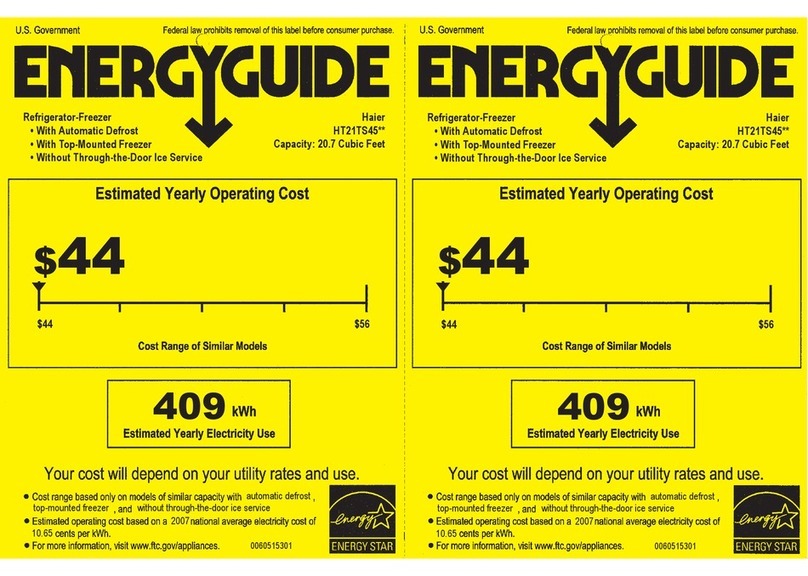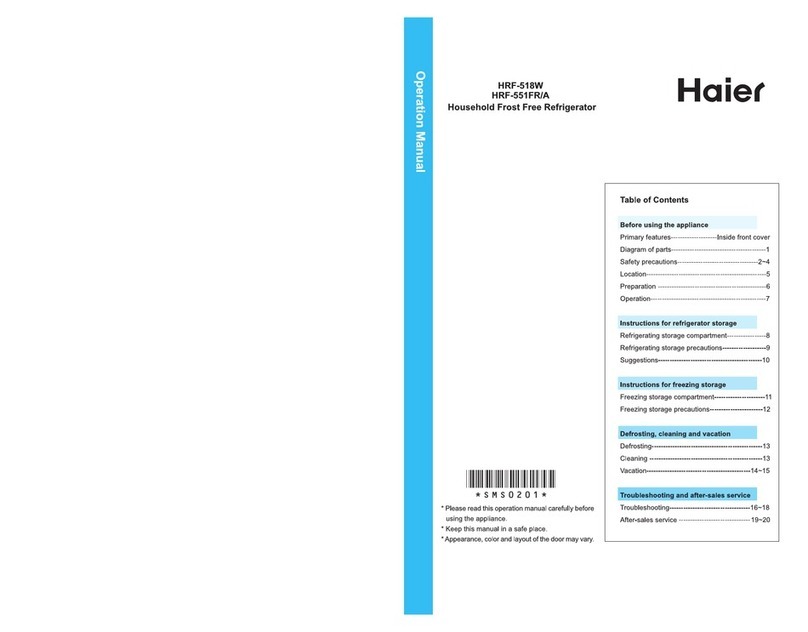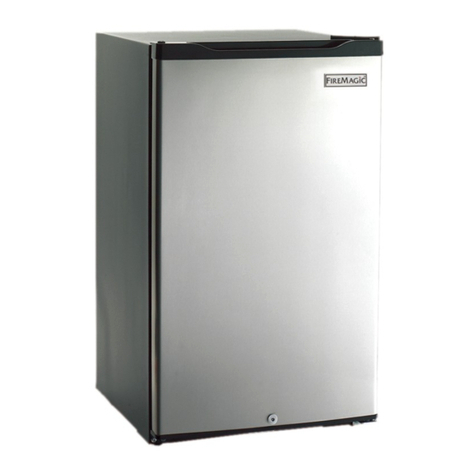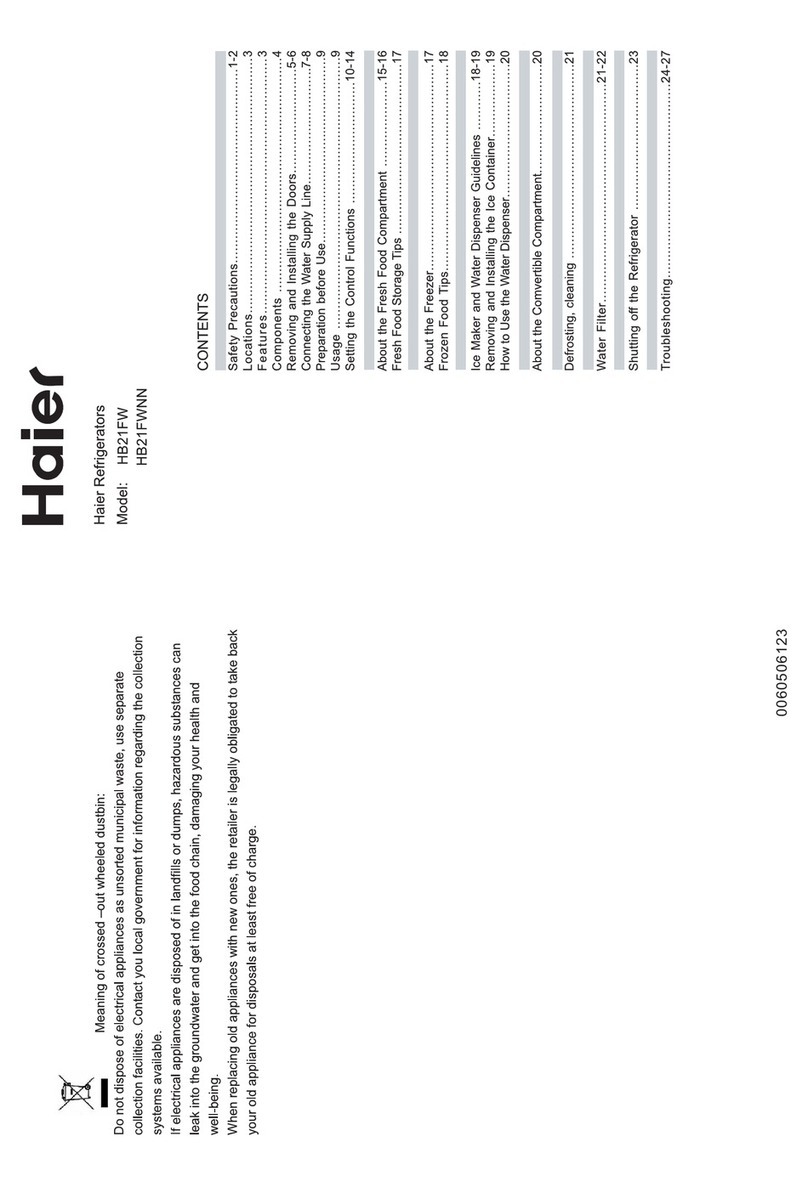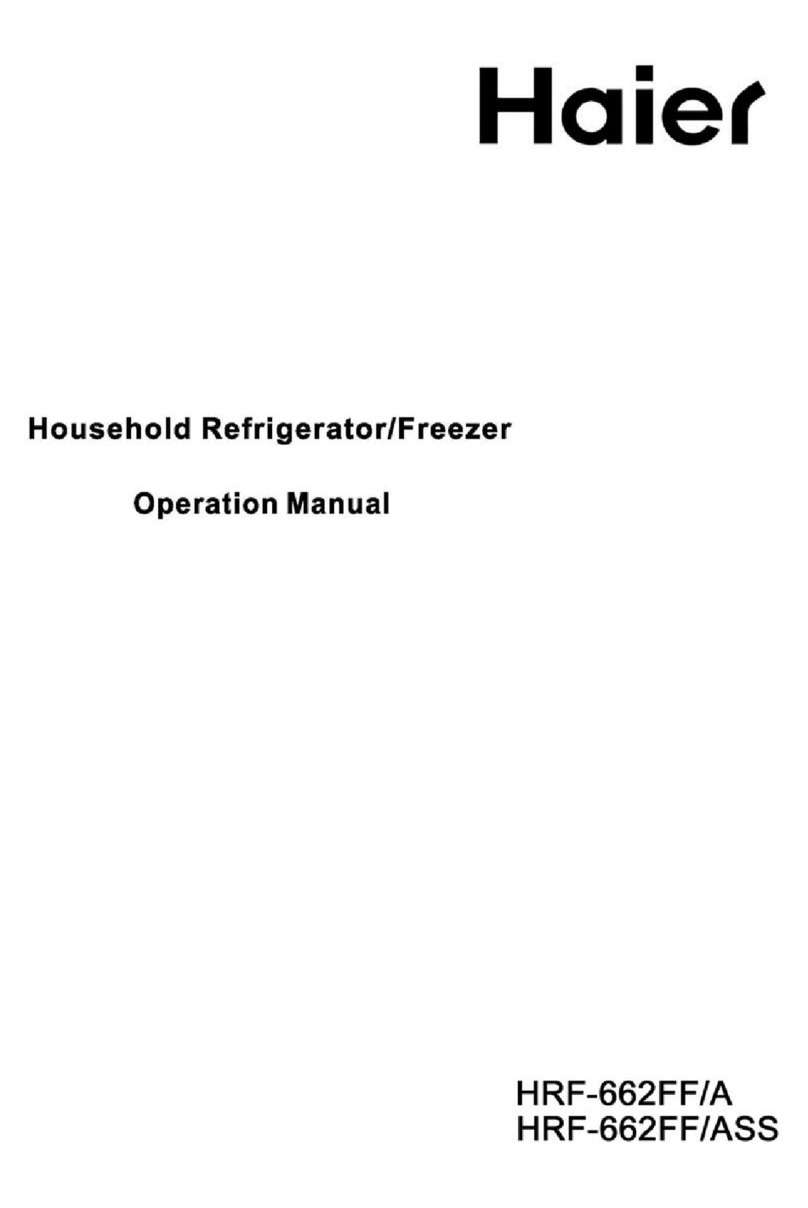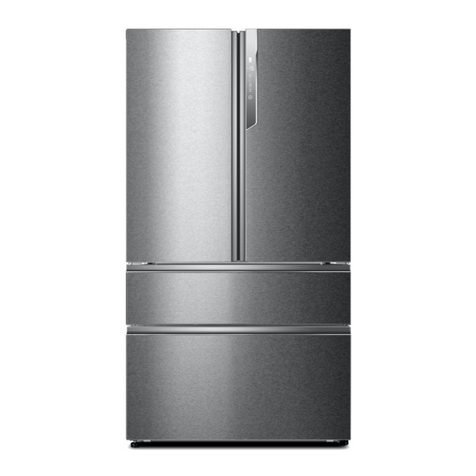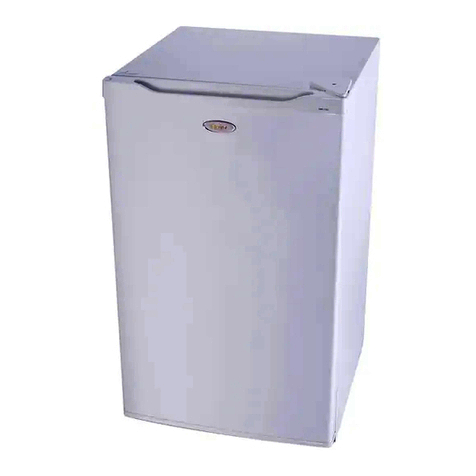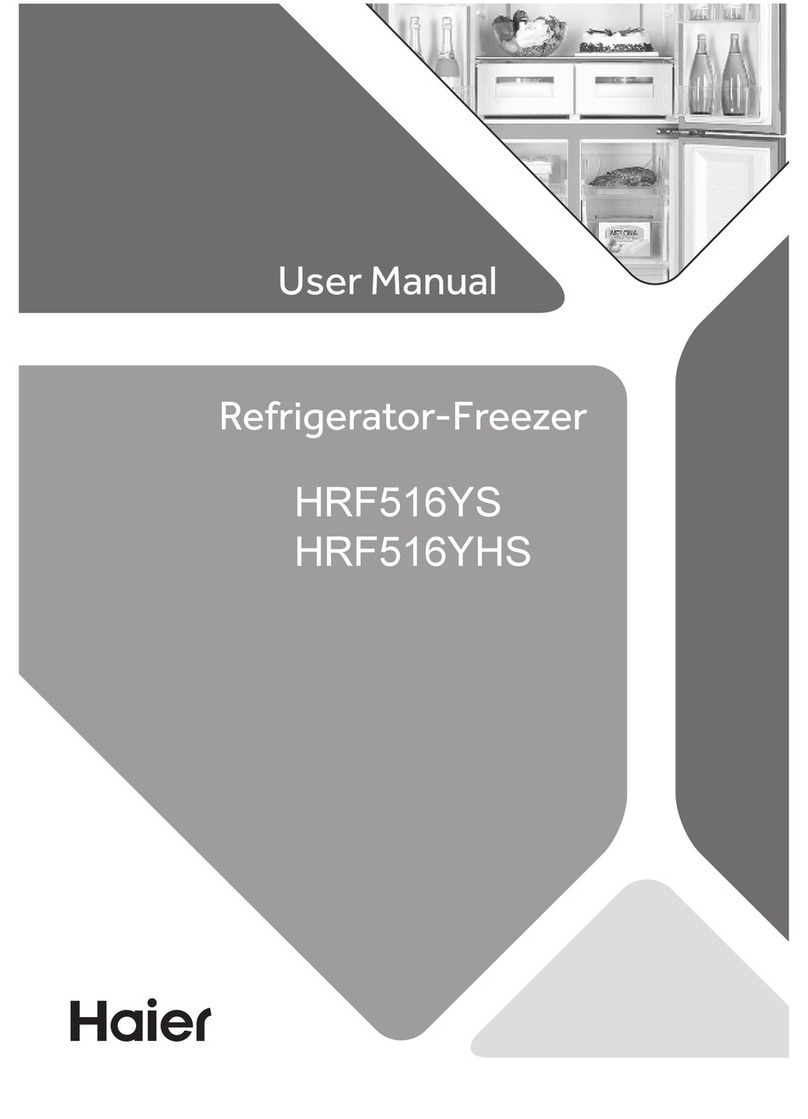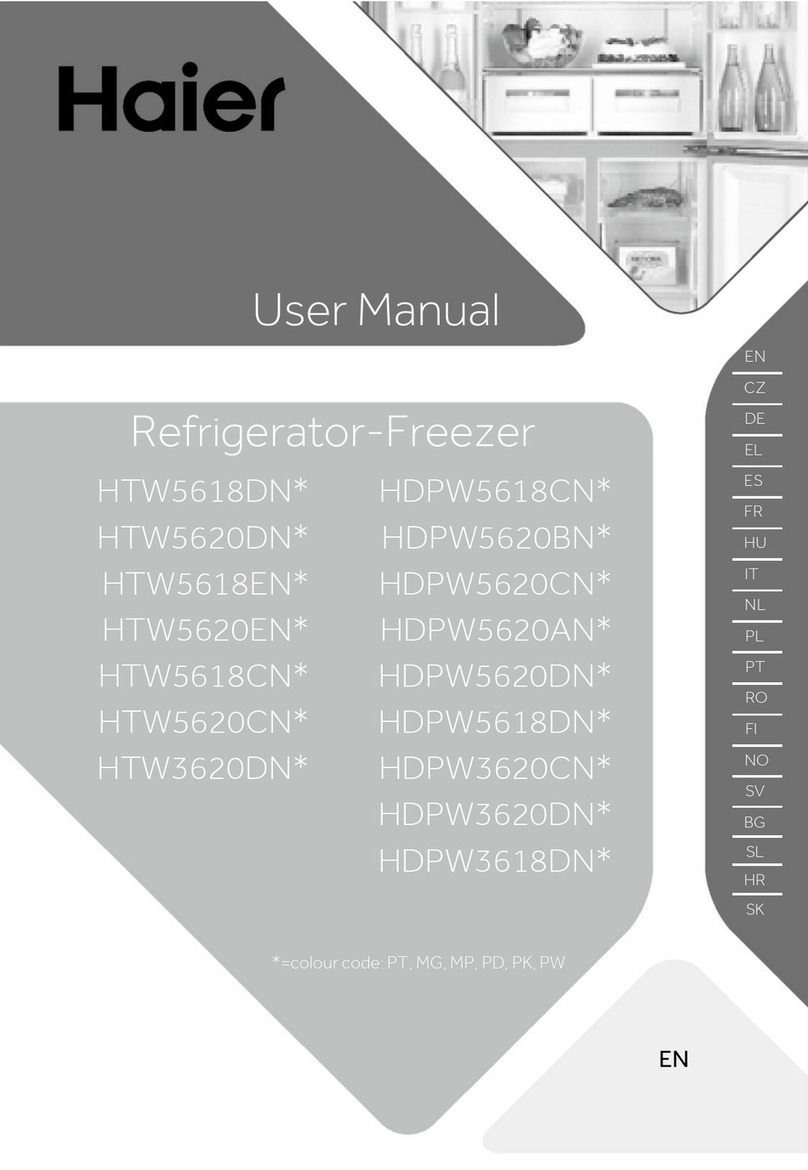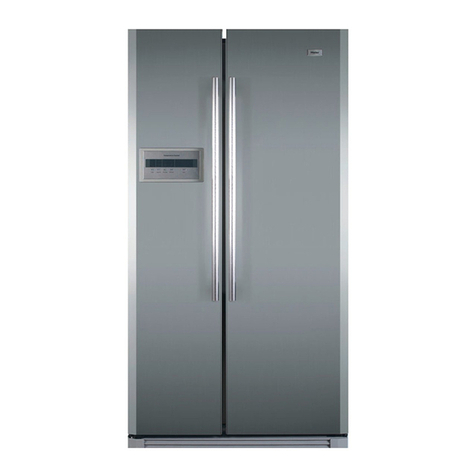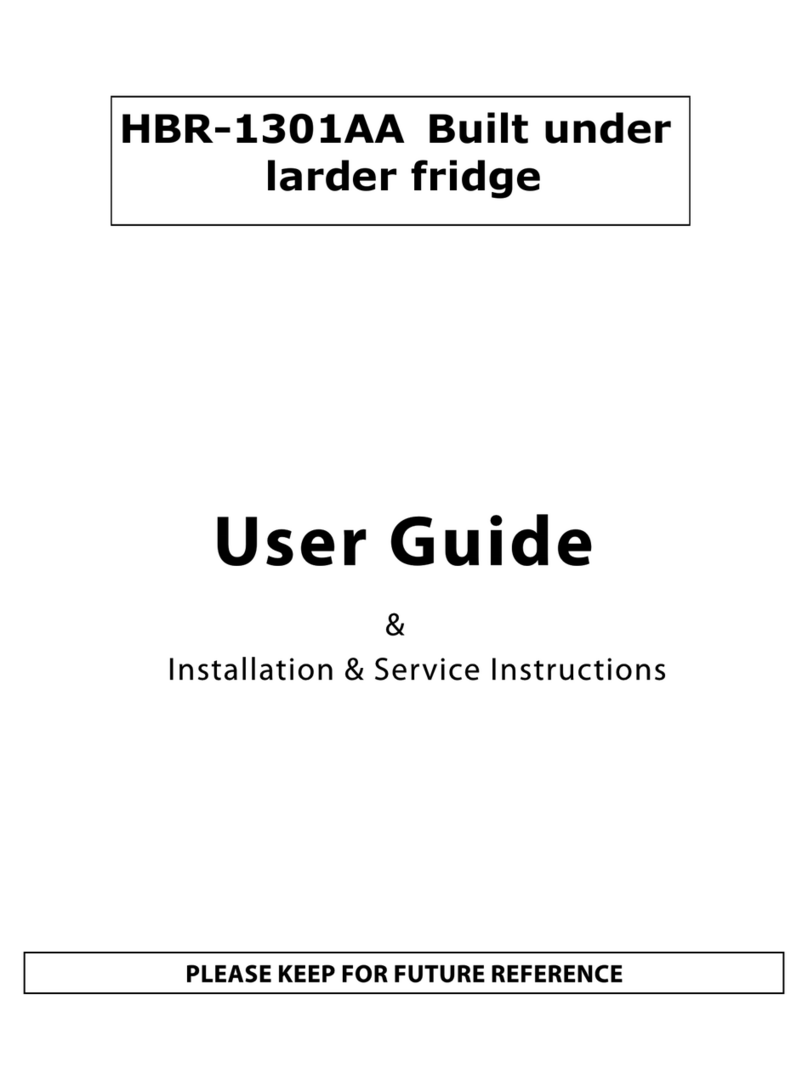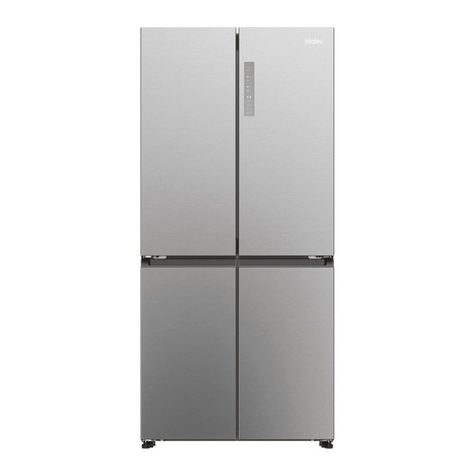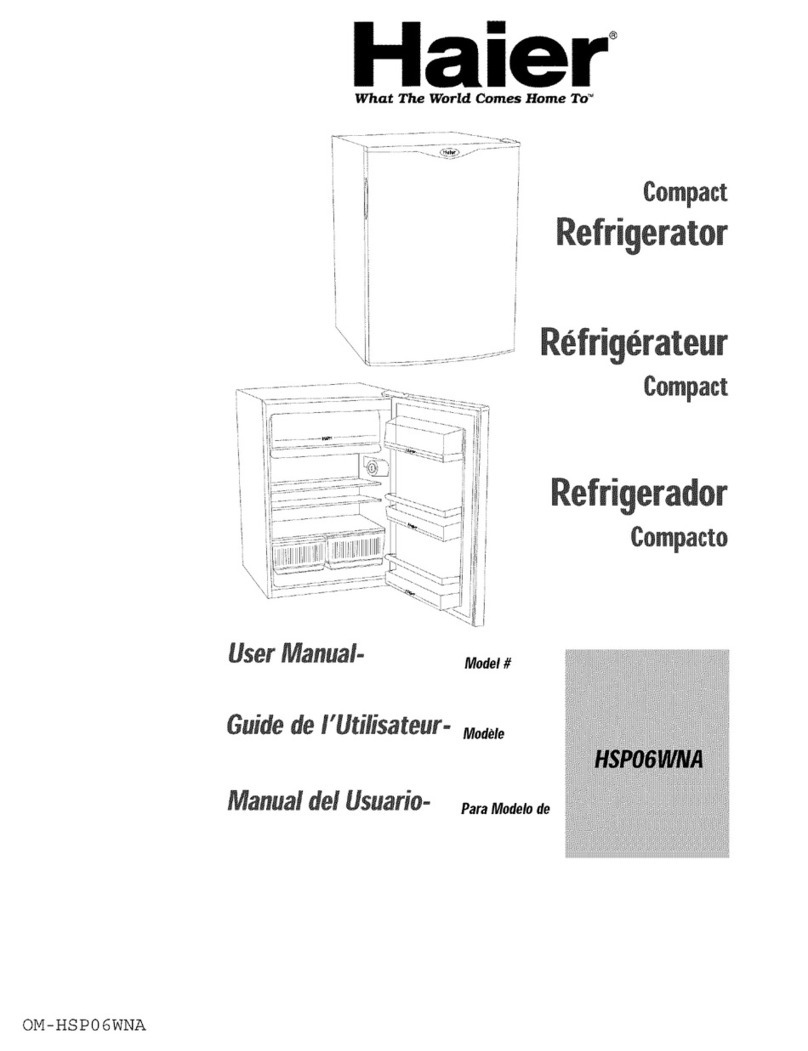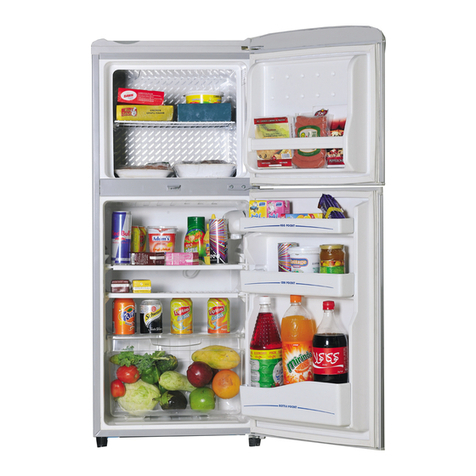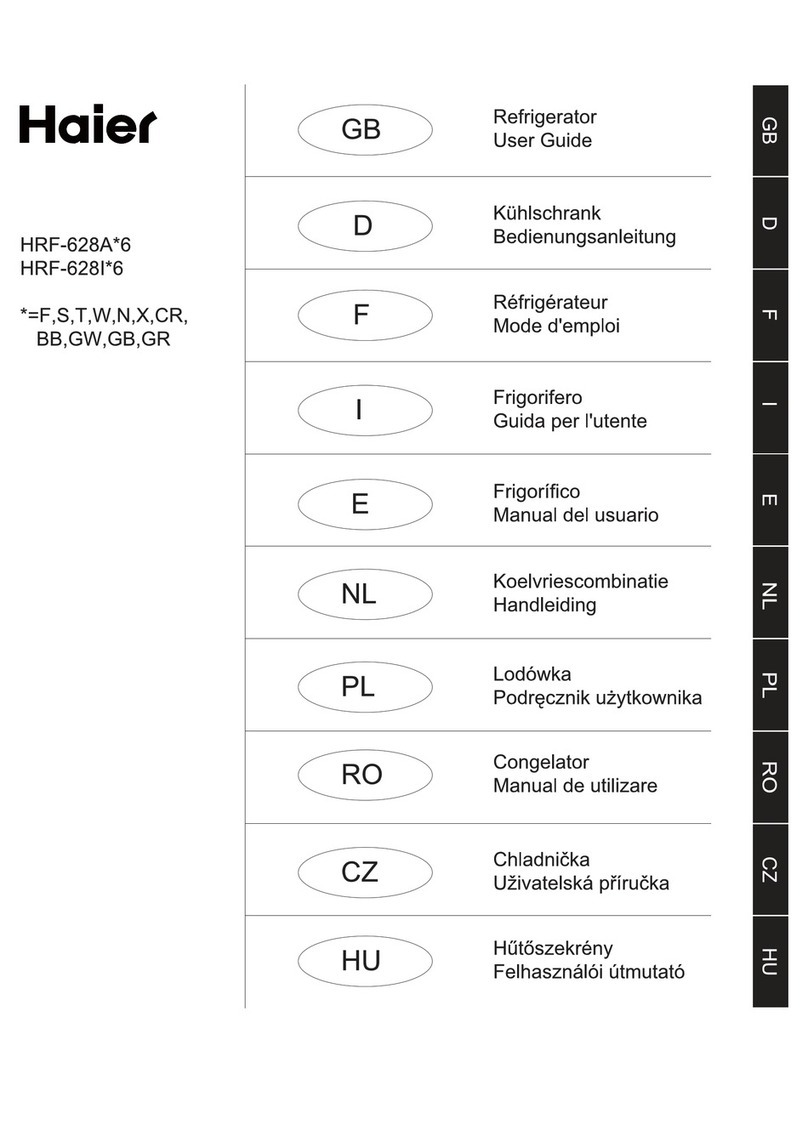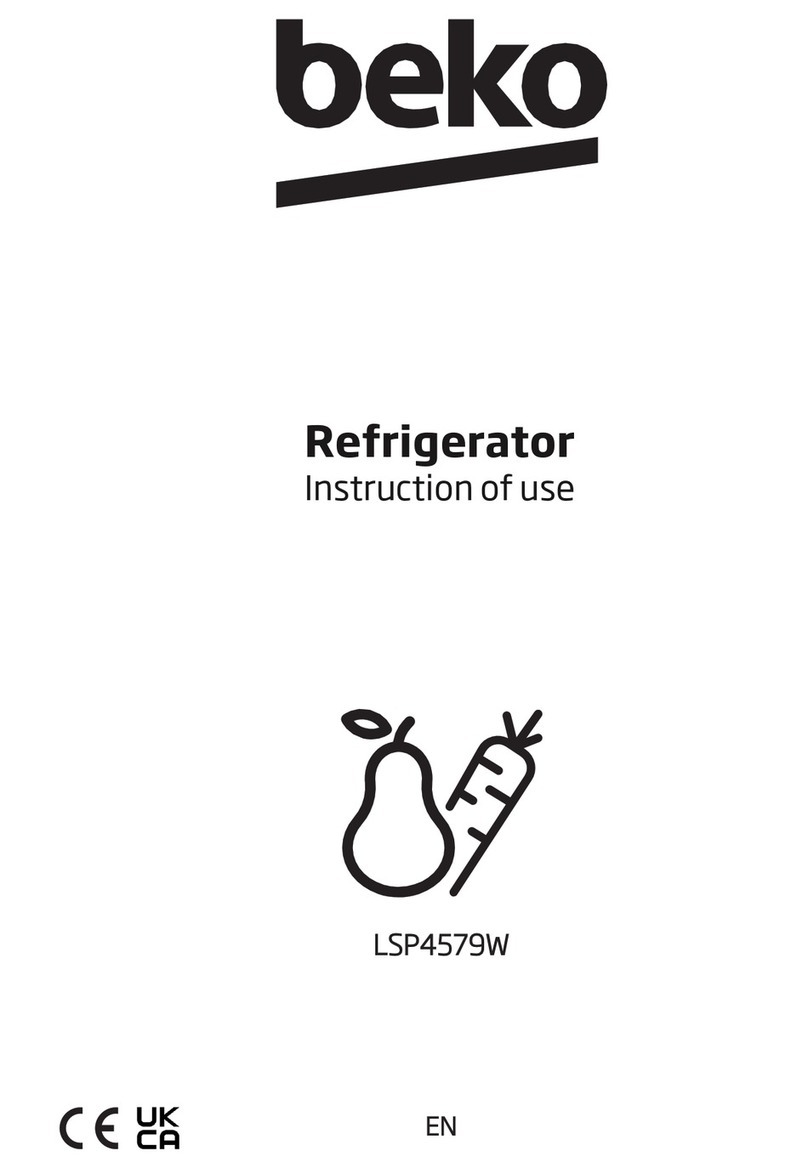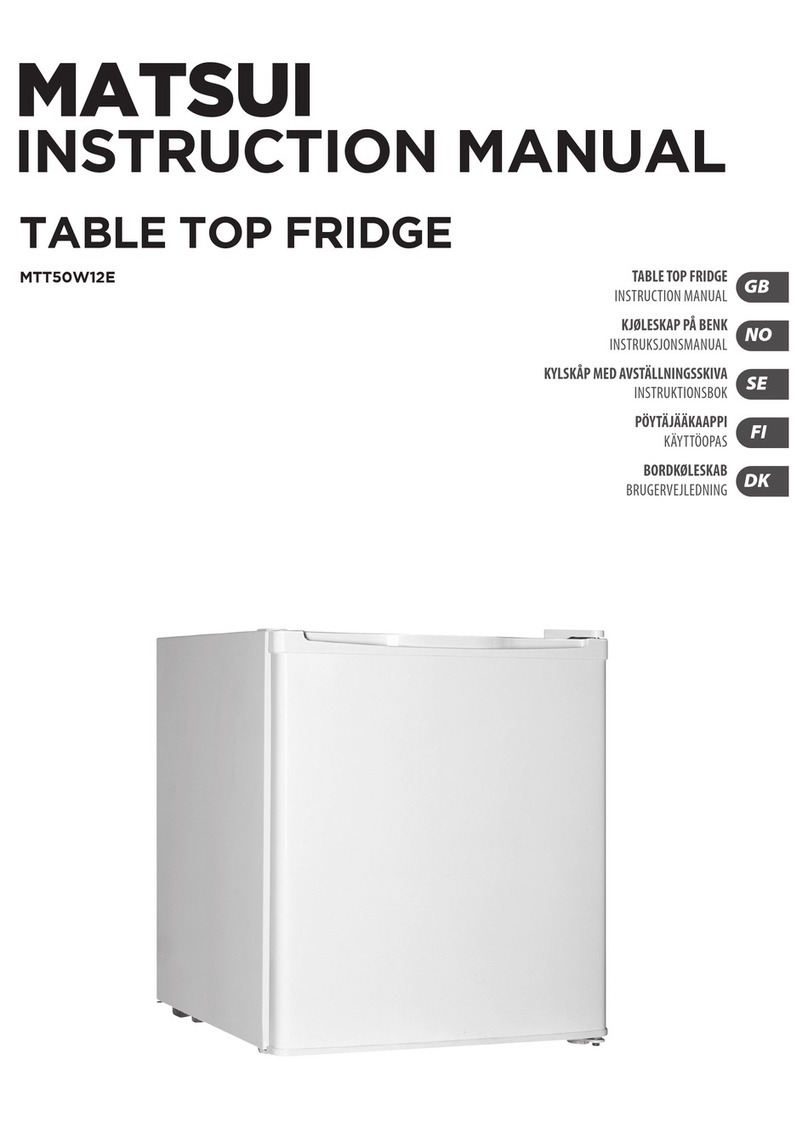
3
IMPORTANT SAFETY
INSTRUCTIONS
WARNING: To reduce the risk of re, electrical shock, injury to persons,
or damage when using the refrigerator, follow basic precautions,
including the following:
• Use this appliance only for
its intended purpose as
described in this user manual.
• This refrigerator must
be properly installed
in accordance with the
installation instructions
before it is used. See
grounding instructions in the
installation section.
• Flammable refrigerant used.
Do not use mechanical
devices to defrost freezer.
Do not puncture refrigerant
tubing.
• Flammable refrigerant used.
To be repaired only by trained
service personnel. Do not
puncture refrigerant tubing.
• Flammable refrigerant
used. Dispose of properly in
accordance with federal or
local regulations.
• Flammable refrigerant used.
Follow handling instructions
carefully. Risk of re or
explosion due to puncture of
refrigerant tubing.
• Plug into a grounded 3 prong
outlet.
• Do not remove ground prong.
• Do not use an adapter.
• Do not use an extension cord.
• Do not repair or replace any
part of the appliance unless
specically recommended in
the manual. All other servicing
should be referred to a
qualied technician.
• Disconnect power before
servicing.
• Replace all parts and panels
before operating.
• Use nonammable cleaner.
• Keep ammable materials and
vapors, such as gasoline, away
from refrigerator.
• Cabinet edges along stamp/
cutout areas may be sharp.
Avoid placing hands, ngers
or other appendages near
these areas.
• This refrigerator should
not be recessed or built-in
an enclosed cabinet. It is
designed for freestanding
installation only.
• Before discarding or removing
from service, remove the
door. This will reduce the
possibility of danger to
children.
READ AND SAVE THESE
INSTRUCTIONS

